12Dec
Choosing the Optimal Propeller Blade
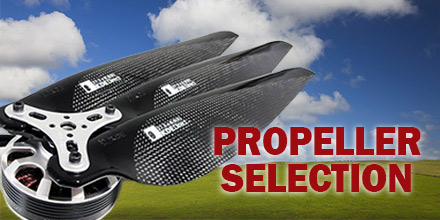 To choose the optimal drone propeller blade, the user should consider a number of factors.
Drone propeller blades have a significant influence on power and affect how smoothly a drone flies.
As such, flight efficiency is one of the most important considerations. It begs the question, how will new drone propeller blades improve the flight efficiency of your multi-rotor UAV?
When selecting new drone propeller blades, the following factors are important considerations:
To choose the optimal drone propeller blade, the user should consider a number of factors.
Drone propeller blades have a significant influence on power and affect how smoothly a drone flies.
As such, flight efficiency is one of the most important considerations. It begs the question, how will new drone propeller blades improve the flight efficiency of your multi-rotor UAV?
When selecting new drone propeller blades, the following factors are important considerations:
Number & Size of Blades
The number of blades required per propeller will vary depending on the platform, usage and payload requirements. Drones for racing and acrobatics most frequently use smaller blades, under eight inches. Smaller blades are generally paired with smaller motors with high kV ratings. Larger blades, over eight inches, are paired with motors that have low kV ratings. These blades are used to carry heavier payloads, such as video equipment or spraying containers for agriculture.Pitch
Pitch is defined as the traveling distance per a single revolution of the propeller. The correct pitch will often depend on the specific application for a UAV platform. Lower pitch often results in more torque and less turbulence for lifting. As a result, the motors do not have to work as hard to carry heavy payloads. And, since the motors draw less current from the battery, it results in increased flight time. Propellers with higher pitches move more air but generally create more turbulence and less torque.Diameter
Typically, a larger diameter propeller blade allows greater contact with the air. This relates directly to flight efficiency, as a small increase or decrease in diameter can change how efficiently a drone performs. In comparison to smaller propellers, larger propellers tend to provide more stability when hovering. However, smaller propeller blades require less effort to speed up or slow down than larger ones. This makes smaller blades more responsive than larger propellers. Smaller propellers with a high pitch are better suited for fast and quick maneuvers. Larger propellers with low pitches are more appropriate for carrying heavier payloads and aerial video cameras.Additional considerations
- Blade material
- Power
- RPM
- Air density
- Maximum noise

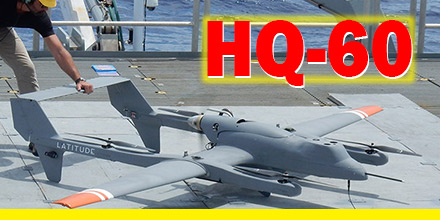 We know more about the universe than we do about the oceans.
As such, it is no surprise that researchers are looking for new ways to understand the ocean.
Of particular interest is the sea surface microlayer (SML) which is identified as the top 1 millimeter of the ocean surface.
We know more about the universe than we do about the oceans.
As such, it is no surprise that researchers are looking for new ways to understand the ocean.
Of particular interest is the sea surface microlayer (SML) which is identified as the top 1 millimeter of the ocean surface.
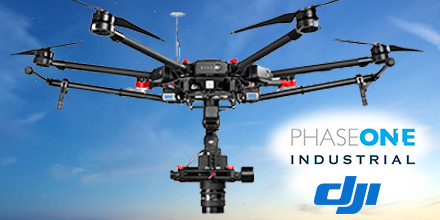 Recently, Phase One Industrial announced full integration of its iXU and iXU-RS aerial cameras with DJI’s M600 and M600 Pro drones.
Phase One Industrial was the first to deliver 100-megapixel medium format aerial cameras.
Built using DJI’s SDK, this is the latest drone platform supported by Phase One Industrial.
From photogrammetry to critical infrastructure monitoring, Phase One continues to innovate inspection tools capable of addressing diverse aerial imaging applications.
Recently, Phase One Industrial announced full integration of its iXU and iXU-RS aerial cameras with DJI’s M600 and M600 Pro drones.
Phase One Industrial was the first to deliver 100-megapixel medium format aerial cameras.
Built using DJI’s SDK, this is the latest drone platform supported by Phase One Industrial.
From photogrammetry to critical infrastructure monitoring, Phase One continues to innovate inspection tools capable of addressing diverse aerial imaging applications.
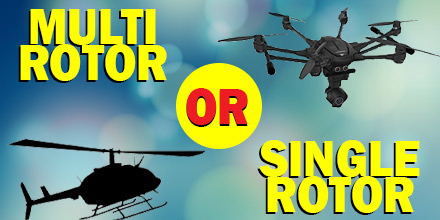 Although multi-rotor drones get most of the attention in the UAV world today, they’re not the only option for a flight project. But why would someone choose a multi-rotor over a single-rotor...or vice versa? Read on to learn the differences between the two, as well as their strengths and weaknesses.
A key difference between the two, not surprisingly, is the number of rotors each offers. A multi-rotor aerial vehicle has several rotors that keep it airborne. In contrast, a single-rotor vehicle has one rotor plus a tail rotor to control its heading.
Although multi-rotor drones get most of the attention in the UAV world today, they’re not the only option for a flight project. But why would someone choose a multi-rotor over a single-rotor...or vice versa? Read on to learn the differences between the two, as well as their strengths and weaknesses.
A key difference between the two, not surprisingly, is the number of rotors each offers. A multi-rotor aerial vehicle has several rotors that keep it airborne. In contrast, a single-rotor vehicle has one rotor plus a tail rotor to control its heading.
 MicroPilot recently announced the successful interface of SightLine Applications’ landing assist functionality with MicroPilot’s autopilots.
This new functionality gives integrators the option of a robust landing assist feature. As such, it helps reduce operator workload and training requirements. This feature rolls out in version 3.7.1016 of MicroPilot’s HORIZONmp software.
MicroPilot recently announced the successful interface of SightLine Applications’ landing assist functionality with MicroPilot’s autopilots.
This new functionality gives integrators the option of a robust landing assist feature. As such, it helps reduce operator workload and training requirements. This feature rolls out in version 3.7.1016 of MicroPilot’s HORIZONmp software.
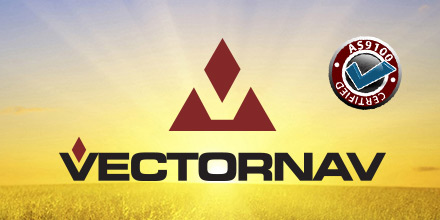 VectorNav Technologies announced it received accreditation for the AS9100 Rev. D international aerospace standard for its Dallas, Texas headquarters.
AS9100 is a set of quality requirements established by the aerospace industry to satisfy DOD, NASA and FAA quality requirements. These quality requirements are based on ISO 9001 standards.
“Earning the AS9100 designation for our Dallas facility demonstrates we are a highly capable supplier to the aerospace industry. Operating to the highest standards of quality is a core principle for us," said Scott MacDonald, Process and Quality Engineer at VectorNav. "This certification reflects our continued commitment to ensure our processes and systems deliver products and services that exceed our customers’ quality, cost, and speed expectations.”
VectorNav Technologies announced it received accreditation for the AS9100 Rev. D international aerospace standard for its Dallas, Texas headquarters.
AS9100 is a set of quality requirements established by the aerospace industry to satisfy DOD, NASA and FAA quality requirements. These quality requirements are based on ISO 9001 standards.
“Earning the AS9100 designation for our Dallas facility demonstrates we are a highly capable supplier to the aerospace industry. Operating to the highest standards of quality is a core principle for us," said Scott MacDonald, Process and Quality Engineer at VectorNav. "This certification reflects our continued commitment to ensure our processes and systems deliver products and services that exceed our customers’ quality, cost, and speed expectations.”
